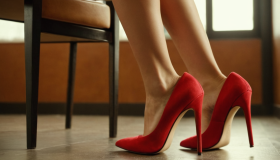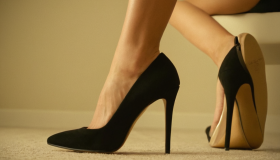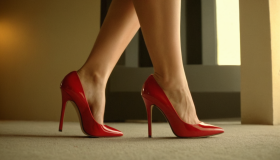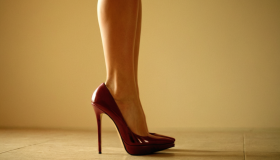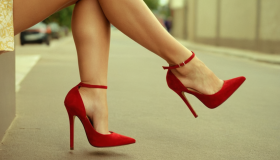
In the world of fashion, high heels are more than just a style statement; they carry layers of psychological and social significance. This article delves into the intriguing world of footwear fetishes, particularly the allure of high heels, exploring why these particular shoes have captivated minds and shaped behaviors.
The Allure of High Heels
High heels have long been associated with elegance, power, and sexuality. Their design alters posture, making the wearer appear taller, with elongated legs and a more pronounced silhouette. From a psychological standpoint, several factors contribute to their fetishistic appeal:

-
Power and Status: Historically, heels were worn by both men and women of high status. Today, they still symbolize authority and sophistication. For some, the act of elevating oneself above others physically can translate into feelings of dominance or submission in interpersonal dynamics.
-
Sexuality and Attraction: High heels change the way a person moves, often with a sway that can be seen as seductive. The arch of the foot, the tension in the calves, and the way heels tilt the pelvis forward subtly enhance sexual signals, which can be highly appealing to those with a foot or shoe fetish.
-
Transformation and Fantasy: Heels can transform one’s look dramatically, offering an escape into a different persona or fulfilling a fantasy. This transformation aspect can be particularly potent in fetishistic contexts where the focus might not just be on the heel itself but the narrative and role it plays.
The Psychology of Fetishism
Fetishism, in psychological terms, involves deriving sexual arousal from non-living objects or specific non-genital body parts. Here’s how high heels fit into this framework:


-
Conditioned Response: Fetishes often develop through associative learning where an object becomes linked with sexual arousal. Someone might associate the physical or psychological traits of high heels with sexual experiences or desires.
-
Psychoanalytic View: Freudian theory might suggest that heels represent phallic symbols or are linked to early developmental stages where shoes could symbolize control over bodily functions or parental figures.
-
Cognitive Behavioral Perspective: From this angle, fetishes might be seen as a way to manage anxiety or control sexual experiences in a predictable, non-threatening manner. The structured, often ritualistic nature of putting on or admiring high heels can provide a sense of order and satisfaction.
Cultural and Social Dynamics:

The cultural narrative around high heels also plays a pivotal role:
-
Gender Roles and Expectations: High heels have been deeply embedded in expressions of femininity, often used to enforce or celebrate traditional gender roles. However, their adoption by all genders in various contexts shows a fluidity in these roles.
-
Media Influence: Films, fashion, and even pornography have amplified the sexualization of high heels, creating a loop where these images reinforce the fetish through widespread cultural consumption.
-
Fashion as Art: Designers like Christian Louboutin or Manolo Blahnik have elevated high heels to art forms, adding layers of desirability through exclusivity and aesthetic appreciation.
The Modern Context:
Today, the conversation around high heels includes discussions on comfort, empowerment, and health. As society evolves, so too does the perception of high heels:

-
Empowerment vs. Objectification: While some find empowerment in wearing heels, others critique them as tools of objectification. This duality reflects broader societal debates on autonomy, beauty standards, and sexual freedom.
-
Health Implications: The health risks associated with regular high heel wear, from foot deformities to back problems, have become more acknowledged, influencing both the design of heels and public attitudes towards them.
-
Diversity in Fetishes: Not all footwear fetishes center around high heels; some are more about the material, like leather, or specific types of shoes like boots or sneakers. This diversity reflects the personal and subjective nature of fetishes.

High heels are more than mere fashion accessories; they are a complex intersection of psychology, culture, and personal identity. Whether seen as a stake in personal expression, a tool of allure, or a piece of psychological intrigue, high heels continue to fascinate and challenge our understanding of human sexuality and social norms. As we tread into the future, the conversation around these high stakes will likely evolve, reflecting changes in societal values and personal freedoms.


